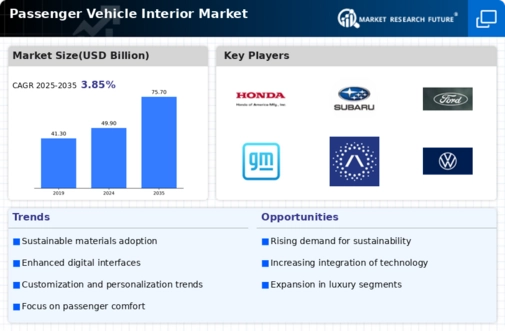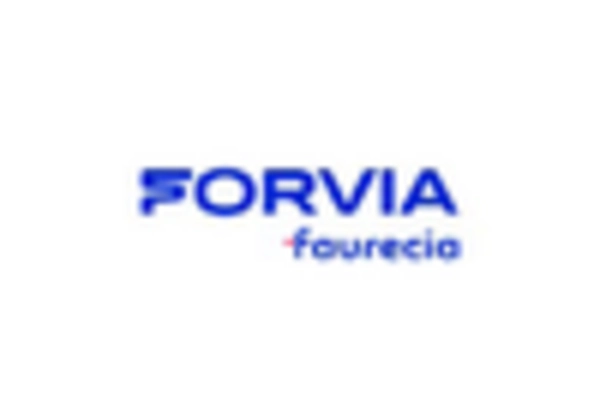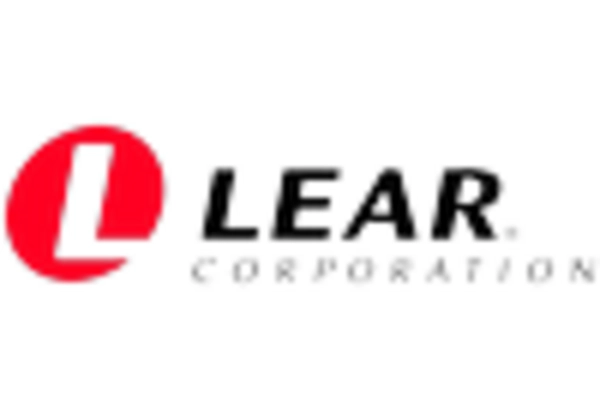Passenger Vehicle Interior Market Summary
As per MRFR analysis, the Passenger Vehicle Interior Market Size was estimated at 49.93 USD Billion in 2024. The Passenger Vehicle Interior industry is projected to grow from 51.86 USD Billion in 2025 to 75.67 USD Billion by 2035, exhibiting a compound annual growth rate (CAGR) of 3.85 during the forecast period 2025 - 2035.
Key Market Trends & Highlights
The Passenger Vehicle Interior Market is experiencing a dynamic shift towards technological integration and sustainability.
- Technological integration is reshaping the passenger vehicle interior landscape, enhancing user experience and functionality.
- Sustainability initiatives are increasingly influencing material choices, with a notable rise in eco-friendly options.
- Personalization trends are gaining traction, as consumers seek unique interior designs that reflect their individual preferences.
- Key market drivers include technological advancements and consumer preferences for comfort, particularly in the leather seating segment in North America and the rapidly growing fabric dashboard segment in Asia-Pacific.
Market Size & Forecast
| 2024 Market Size | 49.93 (USD Billion) |
| 2035 Market Size | 75.67 (USD Billion) |
| CAGR (2025 - 2035) | 3.85% |
Major Players
Adient (US), Lear Corporation (US), Faurecia (FR), Toyota Boshoku (JP), Magna International (CA), Continental AG (DE), Daimler AG (DE), Aisin Seiki (JP), Yanfeng Automotive Interiors (CN)


















Leave a Comment